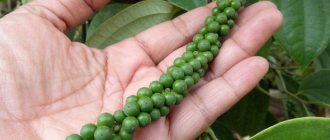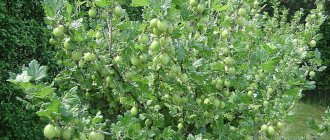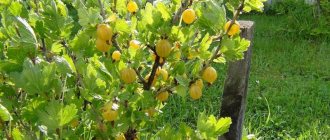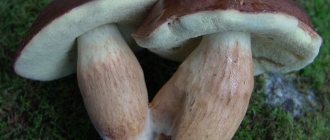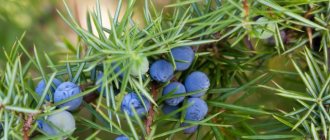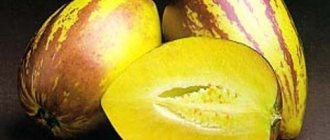Caring for strawberries Black Prince
In order to regularly obtain the maximum possible yields of garden strawberries, you need to pay a lot of attention to planting. The Black Prince variety is no exception.
Watering
Garden strawberries are very moisture-loving, but they require daily watering only after planting and during the flowering process. Stagnant water has a bad effect on the development of the bush. The soil needs to be moistened to a depth of about 40 cm.
If you do not reduce the rate during fruiting, the berries will turn out watery and less sweet. They cannot be saved in any form. On average, one watering (10–25 l) per week is sufficient.
It is not recommended to use sprinklers for watering - water gets on the berries. But by constantly watering at the root, you wash away the top layer of soil. The roots are located very close to the surface. Dig grooves between the rows and water along them.
It is advisable to take warm water - about 20ºС. Therefore, the optimal time for watering is evening. During the day, the water in the tanks will have time to heat up.
After finishing watering, loosen the soil well. Otherwise, a hard crust will form on it.
Video: how to water strawberries?
Feeding
Top dressing of the Black Prince can be either liquid (fertilizers are dissolved in water and the plantings are watered) or foliar (spread over the surface of the bed). It should be noted right away that garden strawberries do not tolerate fertilizers containing chlorine in any form. Therefore, for example, potassium chloride is excluded.
Before fertilizing (about half an hour), water the plants, avoiding moisture getting on the heart.
If you spray fertilizer on the leaves, pay special attention to the underside. It is she who is responsible for absorption
In early spring, garden strawberries need nitrogen for intensive formation of green mass. A universal option is ammonium sulfate, ammonium nitrate or urea (15–20 g per 10 liters of water). Fertilizer can be applied at the root or sprayed on the leaves. To enhance the effect, you can combine fertilizers. For example, apply Nitroammofoska at the root and spray the plants with urea.
When the buds begin to form and the flowers bloom, feed the plantings with fertilizers containing phosphorus (simple or double superphosphate).
Ripening berries require complex mineral fertilizers (Ammofoska, Nitroammofoska, Yagodka, Master, Plantafol, Agricola, Rubin, Stimovit for strawberries). You can add all the necessary microelements separately (ammonium nitrate or urea - 10-15 g, simple superphosphate 35-40 g, potassium sulfate - 10-15 g). Repeat the same fertilizing after harvesting, excluding nitrogen-containing fertilizer.
Those who do not like chemistry, preferring environmentally friendly agriculture, can easily replace it with organic matter. The most popular means are:
- An infusion of cow manure or bird droppings. The original component is poured with water in a ratio of 1:4, tightly closed with a lid and placed in a warm, sunny place. After a week, the result is stirred. For feeding, the infusion is diluted with water in a ratio of 1:10 or 1:15, respectively. Manure and droppings are a natural source of nitrogen.
- Infusion of nettle leaves and stems. It is prepared in the same way, only it is diluted in a 1:2 ratio.
- Wood ash. This is an alternative to potassium-phosphorus fertilizers. You can add it directly to the soil, or prepare an infusion. 50 g of ash is poured into a liter of warm water, filtered after a day and used for its intended purpose.
Folk remedies - a worthy alternative to chemicals
- Remove old mulch. This is an ideal place for overwintering pest larvae and spores of pathogenic fungi.
- Weed the garden bed and cut off yellowed and dried strawberry leaves. Remove all plant debris.
- Hill up the plantings while incorporating rotted manure or humus into the soil. An alternative is vermicompost. Be sure to make sure that the roots are covered with soil. Loosen the soil between the rows. Water the Black Prince well (1–1.5 liters per bush).
- Water the plantings rarely but abundantly. Of course, taking into account the weather. For disinfection, you can water the bed 1-2 times with a solution of potassium permanganate.
- Trim any developing mustache. Do not touch the remaining green leaves. Firstly, nutrients accumulate there, and secondly, it is a strong stress for the plant.
- Just before frost, cover the plantings with any breathable covering material in several layers.
Planting and care
Planting of the Black Negus is carried out in the fall (in September) or in the spring, before the buds begin to bloom. The variety is not particularly demanding on soil composition, but shows best results on moisture-permeable and well-fertilized soils. For planting, be sure to select sunny places protected from cold winds. On a plant planted in the shade, the harvest will ripen later, and the quality of the berries will deteriorate. Mulching the root zone helps retain moisture, attracts earthworms, which keep the soil loose, and inhibits the growth of weeds. Nitrogen-containing fertilizers (urea) are applied in early spring to help the plant begin to grow faster. During fruit formation, organic matter is used (mullein diluted in a ratio of 1:5). Watering is carried out taking into account natural precipitation, avoiding waterlogging. A vigorous gooseberry bush requires annual pruning, which should control the height and density of the plant. The variety propagates quite easily - using layering.
Black negus, although not included in the State Register, is respected among gardeners as a reliable and productive crop. Berry preparations come out with a beautiful rich red color, be it compote or jam. The wine is especially successful. The variety is unpretentious and disease-resistant. But there are still some disadvantages in its characteristics. First of all, this is the need for annual pruning of a strongly growing bush. The thorns make harvesting difficult and cause a lot of trouble. Although gooseberry fruits have many positive qualities, their size is small, and, for example, they are of no value for commercial use.
The black negus gooseberry surpasses even the green variety in its taste. It is for this reason that most gardeners are increasingly choosing gooseberry crops with dark fruits.
It is worth noting that thanks to the efforts of breeders, today it is possible to plant various varieties of aronia gooseberries in your front gardens. But at the same time, there is one variety that simply does not have a competitor like it - this is the black negus, bred by the famous breeder Michurin.
Below we will take a closer look at why black negus remains so popular, how to grow this variety in your front garden, and what you need to know about caring for this gooseberry variety.
We use suitable fertilizers
The gooseberry plant is one of the most prolific shrubs. With good care, it is quite possible to get up to 20 or even 25 kilograms of berries per season from an adult, strong and healthy bush! That is why it quite depletes the soil - to produce so many fruits you really need a lot of microelements
If you do not want the yield to decrease, it is very important to fertilize the plant in a timely manner and correctly.
So, what to feed gooseberries with?
Fertilizer should be started from the fourth year of life, if during planting everything was done as described above. In the fourth year, it is advisable to use organic and mineral fertilizers.
The first includes compost or rotted manure - 10 kilograms per bush. The second includes potassium chloride, saltpeter and superphosphate, which are added to the soil per bush in amounts of 20, 40 and 80 grams, respectively.
The first feeding should be mineral - it is carried out immediately after flowering
Such fertilizers are absorbed very quickly by the plant, so it is important not to overdo it so that the excess is not deposited in the fruits. The second fertilizing, organic, is carried out after harvesting.
Organic fertilizers are absorbed gradually and prepare the gooseberries not only for wintering, but also for successful growth next year.
It is advisable to dilute mineral fertilizers in warm water, which is used to water the plant. With organics everything is a little more complicated. It is advisable to remove the layer of mulch, spread compost or manure under the bush and carefully dig it to a depth of 10-20 centimeters. Then the plant is mulched again.
How to plant this variety correctly
Negus gooseberries are planted both in spring and in autumn. At the same time, experienced gardeners recommend carrying out this procedure in the fall, a month before the onset of cold weather. Moreover, if you live in regions with a temperate climate, then planting is planned from the end of September.
Regarding the issue of planting area, the best place for this crop will be a place with a lot of sunlight.
This variety is not very demanding on the soil. The main thing is to avoid areas where the soil is clayey and heavy. At the same time, low-lying places will also negatively affect the growth of this bush. In general, the best option would be to plant gooseberries on fertile or loamy soils, which are pre-enriched with rotted manure.
Before you start planting gooseberries, you will need to prepare a place for it. This manipulation is performed as follows:
- first, the area is cleared of weeds and fallen leaves;
- the next step is digging up the soil and then removing all weed roots from it;
- then you need to add compost or rotted manure to the ground;
- Next, potassium fertilizers are added.
When all the manipulations are done, after two weeks you can start planting gooseberry seedlings. To do this, you need to dig holes 50 cm wide and 60 cm deep. It is worth emphasizing that if you plan to plant more than one seedling, then in the gooseberry bed you must maintain a distance of 1.5 meters between each bush.
Keep in mind that the bush will soon grow, and such a distance will help each crop to fully grow.
The bottom of the resulting hole is thoroughly moistened, and then planting begins. So, first, they carefully examine the root system, and if no dry roots were found, then the root is lowered into the hole and carefully straightened along the entire perimeter of the planting hole. Then they are covered with earth mixed with rotted manure or bird droppings. After the hole is filled with soil, re-moisten and mulch.
Growing gooseberries in the country - Basic rules for caring for gooseberries
There is not a single child or adult who would not love to climb in thorny bushes and look for small berries there that look like small watermelons. And who hasn’t drunk a delicious compote or eaten gooseberry jam prepared by their beloved grandmother? Gooseberries grow in almost every garden. There is another name for this berry - northern grapes. In this article we will tell you the basic rules for growing this berry in your garden.
Externally, the shrub is small in size, reaching one and a half meters in diameter. It has long thin leaves and large sharp thorns. Depending on the ripeness of the berry, it can have a color from green to purple.
A hybrid of currants and gooseberries, Yoshta, is also gaining popularity. For those who want to grow Yoshta in their summer cottage, we have prepared an interesting article.
Gooseberry care
Gooseberries require care from early spring until autumn.
Spring care
Shrubs planted in the fall already need care in the first spring. The bush around and inside can be covered with manure or peat, which will serve as both feeding and mulch at the same time. You can also mulch with straw or compost, pine bark, this will reduce the number of weeds and retain moisture.
Using mulch will help reduce the number of weedings and retain moisture under the bushes
The formation of the bush begins in the spring, before the buds open. Damaged, dry branches are removed, and strong ones are shortened by 2-3 buds. Subsequently, the most developed shoots are left, cutting off annual shoots by a third. From 2 to 4 zero shoots are preserved annually, so after 7–8 years the bush will have 25–30 branches of different ages.
Formative pruning is carried out from the first year of planting
In early spring, it is important not to miss the time to prevent pest damage to the plant. Good results are obtained by treating gooseberries with boiling water over bare branches (before buds open); watering should be done using a watering can with a sprayer; in this case, the water will cool to a temperature that is safe for the plant, but will be sufficient to control pests
To control pests in the spring, gooseberries are watered with boiling water from a metal watering can from a distance of 1 m
Summer care
Maintenance in summer comes down to loosening the soil and removing weeds. Weeding should be done 3-4 times during the season, watering as needed. At the end of June - beginning of July, it is recommended to feed young shrubs with slurry (diluted with water 1:8).
After picking the berries, in August, the next year's harvest is laid; mature bushes at this time require mineral feeding:
- 35 g of ammonium nitrate or 60 g of ammonium sulfate;
- 70 g superphosphate;
- 30 g potassium salt.
Autumn care, preparation for winter
In autumn, it is necessary to dig up the bushes shallowly, about 10 cm, and apply 80–100 g of complex organomineral fertilizer (for example, Autumn) under each one. Think about how to protect gooseberries from frost. It is very good to cover the bushes with snow, this will prevent the roots and branches from freezing and will promote the accumulation of moisture.
Characteristics
- The Black Negus enters the fruiting period 2 - 3 years after planting;
- According to the timing of ripening, the variety can be classified as mid-season. The plant blooms in the second decade of May. Depending on the weather, the harvest ripens in the third ten days of July or in the first ten days of August;
- the yield is very good. The branches of an adult bush are simply strewn with dark berries; up to 7.0 kg of fruit can be removed from one plant;
- the yield is stable, annual;
- immunity can be safely compared with new improved varieties. Our hero resists well the main enemy of culture - powdery mildew. Resistant to septoria, during the outbreak of this disease the damage does not exceed 1.3 - 3.2%. The maximum score of anthracnose damage is 4 (observations were carried out in Michurinsk);
- winter hardiness is very good. One of the good qualities of this gooseberry is its rapid adaptation to adverse weather conditions. In the Non-Chernozem Zone of Russia, Black Negus is recognized as one of the most winter-hardy (according to observations from 1964 - 1966). After the winter of 1985 - 1986 in Michurinsk, no traces of freezing were found on the plant;
- The fruits also have excellent characteristics. Thanks to their strong skin, they do not crack, despite unfavorable weather conditions, such as prolonged rainfall. The fruits do not fall off the bush; ripe berries can hang calmly on the branches until October;
- the period of productive life of gooseberries with proper agricultural technology can exceed 20 years;
- method of use is universal. Berries can be used in their natural form. But our hero received greater recognition as a variety for technical purposes, suitable for processing.
"Black Negus" in cooking
Having understood the effect of this variety on our body, it is impossible not to mention what can be prepared from black gooseberries. Possessing an incredible thick taste and color, it was rightfully recognized as a wine berry, so we cannot ignore the recipe for making homemade wine. In addition, this gooseberry makes incredibly aromatic jam, and pork combined with it... mmmm... But first things first.
Jam without cooking
This product is valuable because the gooseberries will be packed in jars without heat treatment. This means that all beneficial properties will be fully preserved. This delicacy will become indispensable during outbreaks of seasonal colds - it will help you quickly overcome a runny nose and cough, and if you start consuming it in advance, the cold is guaranteed to go away.
Prepare ingredients:
- 1 kg of black gooseberries;
- 500-600g sugar.
Cooking process.
- Wash the gooseberries in several waters, remove the stems and leaves, and then lay the berries on a towel to remove excess liquid.
- Place the dry gooseberries in a bowl, cover with sugar and grind with a pestle for mashed potatoes.
- When the sugar has completely dissolved, pour the mixture into sterile jars, close the lids and put them in the refrigerator for storage.
Wine
Homemade wine is one of the most popular do-it-yourself preparations. Undoubtedly, most often grapes claim to be the main component, but our black gooseberries are no less aromatic and juicy.
Be sure to prepare this wine and see for yourself its highest taste!
- 1 kg of black gooseberries;
- 1.5-2 cups sugar;
- 1 liter of water.
Cooking process.
- To begin with, the berries must be collected from the bush. Don’t be surprised, this is the process where the preparation of this drink begins. The fact is that when preparing wine, black gooseberries are not washed, but only sorted. Therefore, the purity of fruits carefully collected from the bush plays a significant role.
- Mash the gooseberries thoroughly.
- Cook the syrup - put a saucepan with water on the fire, add sugar and bring everything to a boil. When the sugar has completely dissolved, remove the container from the stove and cool the syrup.
- Transfer the pulp and juice that was formed during the grinding of the fruit into a clean jar, pour in the syrup.
- Using a wooden spatula, mix the contents of the jar, cover its neck with a piece of gauze or linen cloth and transfer to a warm place for a week.
- After some time, the pulp will rise to the surface - it should be removed with a wooden spatula, and the liquid should be poured into a clean container with a water seal on it.
- After this, the drink is left in a warm place for another 2 months. The water seal will notify you that fermentation has stopped.
- The young wine is filtered and bottled into convenient bottles, after which it is transferred to a cool place for 6 weeks for final maturation.
Pork with Black Negus
Prepare ingredients:
- 700-800 g pork;
- 250-300 g black gooseberries;
- 2 onions;
- 130-150 g crushed walnuts;
- 2-3 cloves of garlic;
- 100 ml cognac;
- 2-3 tablespoons of lemon juice;
- lemon zest;
- two sprigs of fresh mint and thyme;
- a pinch of ground black pepper;
- salt;
- vegetable oil.
- Cut the meat into small pieces, maybe cubes with a side of 2-3 cm. If you have pork on the bone, then you need to cut it into appropriate portions.
- Make a marinade - combine cognac with lemon juice. Marinate the meat for several hours.
- Preheat the oven to 200°C.
- We cut the onions into half rings, chop the garlic with a knife and fry everything in a frying pan, in which the meat will then be baked in the oven.
- In a separate frying pan, give the meat a golden crust, transfer it to the vegetables, add herbs, gooseberries, lemon zest, nuts, pepper and salt.
- Cover the container with double foil or a lid and place in the oven for half an hour.
- After 30 minutes, remove the lid, turn on the grill mode in the oven, or simply move the container to the top shelf and reduce the temperature to 180°C.
- Bake for about 10 more minutes.
Black gooseberries are a very rewarding variety, both in agricultural and culinary terms. Be sure to plant this plant on your plot, and every year it will delight you with its harvest and bring only health benefits! Be healthy!
All materials on the Priroda-Znaet.ru website are presented for informational purposes only. Before using any product, consultation with a doctor is MANDATORY!
Recipes for marinades and desserts
Gooseberry and apple confiture
- 1 kg of Black Negus fruits
- ½ kg apples
- 750 grams of granulated sugar.
The stems and dried flowers are removed from the gooseberries. Sour apples are peeled and cut into slices. Both ingredients are ground in a meat grinder or using a blender.
Pour the puree into a saucepan and bring to a boil. Add sugar, stirring. Cook for 5 minutes. After removing the airy foam, the finished confiture is poured into sterile containers and covered with a lid.
Turn the jars upside down until they cool completely.
Raw jam
Ingredients: black negus fruits and sugar in a 1:1 ratio.
Wash the gooseberries, remove the stalks and dry inflorescences. Grind together with sugar in a blender until smooth.
The finished product is placed in an airtight container and stored in a cool place. The jam tastes like grated black currants. Tasty and healthy.
Black negus + citrus
Ingredients: gooseberries and sugar (1:1), fresh orange or lemon zest to taste (from 2-3 fruits).
Gooseberries and citrus zest are passed through a meat grinder. Add granulated sugar. Mix everything thoroughly. They don't cook.
The mass is placed in jars, sealed tightly, and stored in the cold.
Pickled negus
- 950 g ripe fruits
- 12 large currant or cherry leaves
- 9 carnation umbrellas
- 9 allspice peas
- 3 tbsp. l. Sahara
- 1 tbsp. spoon of salt
- 2 tsp 70% vinegar essence.
The stems and spouts are removed from the berries, and the negus is placed in jars (0.5 l). Add 3 pieces on top. into each container: cloves, peppers, leaves.
Pour boiling water over the gooseberries and spices. After 5 minutes, pour the water into a saucepan, throw 3 (or more) currant leaves into it, and cook them for 5 minutes. Having taken out the leaves, pour salt and sugar into a saucepan.
After the brine boils again, add vinegar essence.
All that remains is to fill the negus with aromatic marinade and roll it up with sterilized lids.
The jars are traditionally turned over until the product cools, after which they are transferred to the basement or other place for preservation.
In winter, these gooseberries, along with cranberry sauces, will be an excellent addition to meat dishes.
Exotic variety - black currant
Exotic - refers to varieties with large berries, fully ripens in the middle zone. The variety was developed as a result of crossing Blueberry Seedling and Bredthorpe. The weight of the berries reaches three grams, their taste is sour-sweet, and the skin is shiny in color. When torn from the branches, the berries remain dry, are picked easily and quickly, and can be stored in the refrigerator for several days. The bush gives a high yield, is characterized by medium height and straight branches, and is not too thick. The foliage is large in size, the axis of the berry tassel is straight. It bears up to ten berries. It resists powdery mildew, but is affected by anthracnose. The variety tolerates winter cold well. The yield is not very high - one bush produces up to a kilogram of berries, which are distinguished by their manufacturability.
How is it different from regular gooseberries?
Black differs from more common varieties of gooseberries in the following properties:
- the proportion of vitamin C contained in one berry of dark varieties is several times higher than standard values;
- natural antioxidant;
- systematic use allows you to cleanse the body, ridding it of unnecessary toxins and harmful substances;
- long-lived among other crops. The bush lives quietly for twenty or more years;
- contains a large number of minerals that enrich the body.
The Black Prince at the Fence
Ten years ago, my husband and I bought a house with a plot and started growing vegetables and berries. We purchased the latest varieties of grapes, yellow and red raspberries, single-use and remontant strawberries, as well as currants and gooseberries for planting.
About five years ago, while trading at the market, we saw a wonderful black berry. It was a garden blackberry. We were very interested in her, and we decided to find out more about her. We read a lot of literature, and it turned out that there are thornless varieties that do not produce shoots. At the nursery we purchased seedlings of three varieties, of which we left one on our plot - Black Prince. This variety turned out to be the most unpretentious, disease-resistant, very productive and begins to bear fruit earlier than others. The berries of this blackberry are not only tasty, but also have healing properties due to their high content of vitamins. In folk medicine, leaves, fruits and even roots of the plant are used as medicinal raw materials. Berries have anti-inflammatory and antipyretic effects. The leaves are added to tea to improve the taste. During this time, we have become convinced that there is no more unpretentious and productive berry crop than garden blackberries. It can be grown in shade, partial shade, or sun. This blackberry has a very powerful root system, so the plants do not require abundant watering. It does not sprout, does not suffer from anything and does not grow throughout the entire area, like raspberries. The berries begin to ripen in July and finish in October. The black color of a berry does not mean it is ripe. When ripe, it should easily move away from the stalk, only then the berry gains sweetness. I grow garden blackberries like grapes - on a trellis. The larger and more powerful the bush, the higher the yield. And sometimes it can reach up to 3 buckets from a bush. The berries are transportable, dry, and can be stored in the refrigerator for up to two weeks. The size of one berry is the size of a five-ruble coin. At a height of 1.5 m, I pinch the top of the plant, after which a new shoot appears from under each leaf, which will bear fruit the next year. In the fall, I cut off the fruit-bearing shoots to the ground. For the winter, I remove the plants from the trellises, bend them to the ground and cover them with film. I plant blackberries at a distance of 1.5 m from each other. They grow at a distance of half a meter from the fence, and practically take up no space in the garden. The plants are very beautiful, with large waxy green leaves, bloom with soft pink flowers, look like a hedge. When the berries ripen, the bushes are strewn with clusters of red-black, very large berries. Blackberry dessert is on our table all year round. I would recommend everyone to plant this miracle berry in their garden.
Description
The spreading bush of the Black Negus is formed by numerous arched shoots up to 2 m long. The petiolate leaves are medium in size, with a three or five lobed plate characteristic of gooseberries. The leaf tip is obtuse.
There are 2-3 large tenacious spines concentrated in the internodes. They are the reason why some summer residents are trying to get rid of the famous retro variety.
Whether to grow this black gooseberry or not, each gardener will have to decide for himself. The challenge: either stock up on a dozen harvesting gloves or put up with a lot of scratches on your hands.
Fruit
The berries are small, weighing no more than 2 g, in pairs or alone, located on elongated stalks. The skin is blue-violet, smooth, thin, without pubescence, covered with a barely visible waxy coating.
The pulp is dark red, with a small seed. The fruit, even when fully ripe and overripe, does not lose its slight sourness. In general, the berries were given a tasting score of 4.7.
The bush blooms in the second decade of May. The berries ripen in late July - early August. Gardeners note that the fruits of the Black Negus do not crack even if the bush is planted in a hollow where water stagnates when the snow melts or after rains.
The shedding of berries tends to zero. It’s October, and long overripe fruits are in no hurry to leave the bush. Although their taste and appearance, of course, are no longer appetizing or marketable.
Interesting! If the berries of most varieties of gooseberries taste like currants, then in this case it is more correct to compare them with ripe grapes.
Features of cultivation
This crop is a long-lived crop, as it can grow in one place and bear fruit every year for up to 20 years. But, like other cultivated plants, Black Negus requires care.
Landing
Shrubs are planted in spring or autumn. But it takes root best when planted in the fall. It is best to do it in mid-September-October. During this time, the root system will be able to adapt well to the coming cold weather.
Gooseberries are planted according to the following scheme:
- a week before planting, it is necessary to add organic fertilizers to the soil, and then dig it thoroughly;
- remove all weeds;
- dig a hole 50 cm wide and deep;
- if it is necessary to plant several bushes, the distance between them should be 1.5 meters;
- to ensure root respiration, pour a little river sand into the hole;
- Place the seedlings at an angle of 45 degrees;
- fill the soil and compact it;
- Water the plant generously.
Watering
Gooseberries need to be watered regularly. The main thing is not to overdo it, as increased soil moisture can lead to rotting of the root system. It is enough to water once a month. If the summer is hot and dry, gooseberries are watered about 5 times per season
It is especially important to properly moisten the soil when the plant is blooming.
You can use various irrigation methods: subsoil or drip. It is forbidden to water with cold water. It must be settled. In order for the gooseberries to produce a rich harvest and develop qualitatively, after watering the ground under the bush is mulched. You can add compost or humus. Over time, earthworms will settle in such soil, which will promote better air flow to the roots.
Top dressing
If fertilizers have already been applied during planting of the Black Negus, the next feeding is carried out after 3 years. Fertilizers are applied around the perimeter of the bush in autumn or spring. It is enough to fertilize once a year. Gooseberries love compost, humus, superphosphate, potassium and nitrogen fertilizers.
Organic matter can be applied directly under the bush. The layer thickness should be from 5-8 cm. A concentrate of beneficial bacteria Baikal-EM-1 can be used as fertilizer. It is diluted in water in a ratio of 1 to 1000. The soil under the plant is pre-moistened, and then the solution is poured under the bush. Then they mulch with rotted straw, sawdust, and compost. The most effective application of fertilizer will be after rain.
Trimming
This culture is prone to overgrowth. Therefore, it needs to be trimmed periodically. This is recommended to be done once a year in the fall. If the plant is allowed to grow too much, it can negatively affect the yield. Every year it is necessary to remove old, diseased and damaged branches. Only strong ones, up to 50 cm in height, are left. If they are not planned to be used for propagation in the form of layering, it is also recommended to trim them.
Planting young seedlings on the site
When to replant gooseberries to a new place
It is best to use annual seedlings; they are easier to accept and do not require a large planting hole. Before planting, treat with a root-forming preparation according to the instructions. To activate the growth of the root system, before planting, you should trim the roots of the seedlings by a couple of centimeters.
Time and landing pattern
Black negus will take root equally well with both autumn and spring planting. But if you plant a plant in the fall, you should take into account that about 1.5 months must pass from planting to the onset of frost so that the shrub has time to adapt and its root system is strengthened before winter.
Group planting of shrubs
Important! Black negus is a spreading shrub, so when planting in groups, you should leave 1.5 m between seedlings and at least 2 m between rows.
Choosing a landing site
To plant gooseberries, you should choose a sunny and not very windy place, but for the unpretentious Black Negus variety, planting in a slight shade is also possible.
The shrub should be planted on an elevated (or at least flat) surface, because excess moisture is detrimental to the roots of the plant. A place where groundwater rises close to the surface is also not suitable for planting.
The composition of the soil is not particularly important; gooseberries will grow and bear fruit in any soil except clay. But in order for the plant to reveal its full potential and bear fruit abundantly, loose fertile soil rich in organic fertilizers is chosen for planting.
Site preparation
Before planting seedlings, it is advisable to dig up the soil and get rid of weeds with roots, because when the thorny bush grows, cleaning under it will be problematic.
Important! Black negus is undemanding to soil, but it is better to choose sandy or loamy soil, with a pH level of about 6. If planting is done in clayey or poor soil, then you need to fertilize it with humus or compost.
Planting process
Holes for seedlings are dug 40 cm wide and 50 cm deep, fertilizer is added to them (humus or compost is good as fertilizing, if they are not available, you can also use superphosphate and potassium), and water is poured. The roots of the seedling are dipped in a clay mash and lowered into a hole at a slight angle so that the root collar is covered with 5 cm of soil. After planting, the seedlings are pruned, leaving 4-6 buds on each. The seedlings are watered abundantly; about 10 liters of water per bush will be required.
Seedlings should be watered abundantly
Growing gooseberries on a trellis
Growing gooseberries on a trellis is the most modern method. This method allows not only to increase productivity, but also to make fruiting last longer. The branches of the bush do not sink to the ground, thanks to which the berries remain clean and warm up in the sun from all sides.
Peculiarities
Trellis are a support to which young shoots of a plant are tied. If installed correctly, space in the garden will be saved significantly. Pruning shoots tied to trellises is easier to do. In addition, harvesting becomes much easier.
Landing technique
Gooseberries on a trellis, how to grow them compact, planting technology:
- The crop is planted in the ground at intervals of 1 meter.
- All shoots creeping to the ground are cut off. The upper branches are left untouched. Pruning is carried out 7 days after planting.
- Columns made of wood or metal are selected for supports. They are dug into the ground. A wire is pulled between them. It is placed one above the other in three rows.
- The branches of the bush are tied to the lowest wire. Every year, as they grow older, the branches are tied to a second wire, then to a third. All root shoots are cut off, and new shoots are shortened.
Pros and cons of technology
In addition to the obvious advantages, compactness, ease of care and harvesting, this growing method has a number of disadvantages. Installing trellises requires a lot of time and effort. In addition, gooseberries constantly need to be pruned.
Reproduction
The Black Negus reproduces using standard methods.
- By cuttings. In the fall, young shoots are separated, cut into cuttings with 3-4 buds and planted in the ground at an angle of 45° so that 1-2 buds remain above the ground.
- By division. The bush is dug up and divided into two parts. One of them is put in a new place.
- By layering. This is the most effective method of propagation: in the spring, one of the shoots of the bush is bent to the ground and buried. The plant is watered regularly, and after new shoots grow, it is fed. In the fall, the new plant is separated and replanted.
- By shoots. Prune and then root the branches that form close to the base of the plant. This propagation method is not suitable for bushes older than 8-9 years.
- Branches. A well-formed branch with part of the root system is separated from the mother plant and transplanted to another place.
Various ways to grow gooseberries
In addition to the usual bush forming of gooseberries, there are innovative methods that are still rarely used in personal plots.
Features of growing gooseberries on a trellis
Tall varieties are suitable for growing gooseberries on a trellis. Plants are planted more densely than with normal planting - at a distance of 1–1.2 m from each other, at least 1.5 m between rows. Gooseberry branches should be arranged in the form of a fan and tied to the bottom wire of the trellis, subsequently the shoots are directed vertically.
This method of growing gooseberries has many advantages:
- beautiful decorative appearance;
- plantings take up little space;
- bushes get sick less often because they are not thickened;
- good access to the plant for care and harvesting of fruits is provided;
- the bushes give a good harvest, the berries are usually larger.
Gooseberries on a trellis save space on your site
Features of growing standard gooseberries
The standard gooseberry is grown in the form of a tree with a trunk approximately 60 cm high; such a plant looks very original and decorative. It is easy to care for - loosen the soil, harvest.
Standard gooseberries look very original
Forming gooseberries on a trunk is a rather complex and painstaking process. The seedlings are grown for several years, then the entire above-ground part is cut off, and only one of the new shoots is left, from which the trunk is formed. Subsequently, all buds are removed except the top 5–6, which will become future branches.
Video: standard gooseberry
Features of growing gooseberries without thorns
The thorns on gooseberry branches cause certain difficulties for gardeners. The presence of thorns makes it difficult to care for the plant: weeding, pruning and harvesting. But now thornless varieties have been bred, although they are not completely devoid of thorns.
The absence of thorns on gooseberries greatly simplifies the collection of berries.
There is an opinion that the fruits of bushes without thorns are not as tasty and sweet. This is not true, it all depends on the chosen variety. They are also not inferior in winter hardiness and productivity. Caring for thornless gooseberries, pruning, and propagation are similar to the usual types.
Advantages and disadvantages of culture
The undeniable, time-tested advantages of the Black Negus gooseberry:
- dessert nutmeg flavor of berries
- increased yield
- resistance to sphere library
- winter hardiness
- undemandingness in agricultural technology
- decorative look.
- small berries (when left to chance)
- sharp thorns that create an impenetrable jungle and prevent the harvest from being completely harvested.
In other words, if you need a black gooseberry bush solely for the sake of its berries, then you should turn to other, less thorny varieties.
If the ultimate goal is to decorate the area with a luxurious and impenetrable hedge, then the Black Negus with two-meter shoots decorated with juicy purple ribbons of berries has no equal. This variety is beyond competition.
On a note! The name of the culture coincides with the title of the same name of the emperors of Ethiopia at the end of the 20th century. Whether it’s an accident, a coincidence, or Michurin’s tribute to the Ethiopian rulers, many gardeners recognize the bush itself as incredibly beautiful and stately, putting the plant’s productivity in the background.
Fruit
The berries are medium in size, weighing on average 4–5 grams, oval-shaped, sometimes pear-shaped. The skin is rich in color, from bright red to dark purple, almost black. It is dense with a slight bluish tinge. The flesh is dark red. Prune gooseberries have an excellent taste - they are very sweet (sugar content up to 10.6%), with an unusual plum aroma and taste.
It is worth noting the beneficial properties of this variety. Traditional healers use berries to treat vitamin deficiencies, anemia, digestive disorders and other diseases. The dense peel allows the berries to be preserved for a long time; they are easily transported over long distances. The author of the variety recommends Prune gooseberries for universal use - the berries are very useful when eaten fresh, adding an original taste to jams, fruit drinks, juices, tinctures and wines.
The variety is frost-resistant, but prefers not very frosty winters, as well as not too hot summer months. At a soil temperature of +1°C, the root system is in an active state. It dies when the temperature drops to -3°C.
Features of the variety include:
- faint, almost invisible spines;
- resistance to infection by powdery mildew and spheroteca;
- high productivity, increasing every year;
- propagation by both cuttings and seedlings;
- drought and frost resistance;
- presence of a period of rest.
Description
The plant is powerful and beautiful, from 1.5 to 2 meters in height; by the age of ten it can grow even higher. Black negus can be used as a hedge along the borders of the site. As a joke, gardeners nicknamed it gooseberry from an evil neighbor. The bushes are spreading, sometimes up to 3 meters wide. The shoots are powerful, strong, arched, grow upwards and to the sides, thorns are located in each internode along the entire length. The spines are very sharp, long, single, double or triple, curved down. The leaves of the variety are large, three- or five-lobed, with slight short pubescence, tender to the touch, and bright green in color. The surface is dull, slightly wrinkled. The edges of the teeth are rounded. The central blade rises above the side ones, the cutouts between the blades are not too large. The petiole is long, thin, uncolored. Inflorescences consist of one or two medium-sized flowers.
The fruits of the Black Negus are smooth, elongated, pear-shaped, small in size, weighing 2.0 - 2.5 grams. The calyx is large and closed. The skin is tender, elastic, not thick, but strong, without pubescence, thickly covered with a bluish waxy coating. When fully ripe, the berry is dark purple, almost black. In ripe fruits, venation is not visible. The taste is unique, sweet and sour, many compare it to grape. The aroma is strong and specific. The taste of gooseberries is assessed as satisfactory. The seeds are medium size, brown in color. A distinctive feature of the variety is the color of the pulp and juice in red.
Features of seasonal care
Black negus needs rare but abundant watering: 3-5 times per season, up to 10-30 liters of water at the root of each bush. If the summer is dry, then the plant needs to be watered more often.
They begin to fertilize gooseberries 1-2 years after planting. Fertilizing is done 2 times a year: in the spring, until the buds open, and in the fall.
Black gooseberry is a very prickly plant, therefore, to get rid of frequent loosening and weeding, the tree trunk circles are covered with mulch.
Growing gooseberries on trellises
Growing gooseberries on trellises makes harvesting easier and speeds up the ripening of the berries. The branches of the bush are arranged in a fan, directing them upward evenly along the surface of the trellis at a distance of approximately 20 cm from each other.
Spraying the bush with an infusion of orange peels, onion peels, or a solution of the Baikal-EM-1 preparation will protect it from aphids.
In early spring and on the eve of winter, the Black Negus needs to be pruned, all weakened branches, small shoots and non-fruiting shoots must be promptly removed. For branches aged from 2 to 7 years, anti-aging pruning should be carried out. In spring, it is advisable to shorten the top of the bush by 1/3.
Note! To increase the size of the berries, you can trim the green shoots in the summer, leaving 5-7 leaves on them. To prepare gooseberries for winter, it is enough to prune and water the plant generously
The amount of water on the eve of frost increases the heat capacity of the soil, and the soil freezes more slowly
To prepare gooseberries for winter, it is enough to prune and water the plant generously. The amount of water on the eve of frost increases the heat capacity of the soil, and the soil freezes more slowly.
Autumn pruning of gooseberries
Pest and disease control
To protect the plant from pests in early spring, before the buds awaken, it should be treated with hot water.
Note! For one bush, use a watering can of hot water with the addition of a pinch of potassium permanganate and 1/3 teaspoon of boric acid.
Today, breeders are developing many new varieties of berries, and usually the new ones are superior to their predecessors. But there are varieties that are timeless, for example, the Black Negus gooseberry. And although Negus is a gooseberry with almost a century of history and is a retro variety, its taste can give odds to many modern hybrids. Therefore, it still remains one of the most beloved berry crops by gardeners.
How healthy are black berries?
As you know, the darker and richer the shade of the berries, the greater the benefits of consuming them. This is exactly the case with the Black Negus gooseberry. In general, its qualities are similar to ordinary gooseberries, but in terms of the amount of vitamin C it is significantly superior to its “green brother”.
Let's find out how it is good for our health.
- With the use of this variety, the functioning of the nervous system will be improved - B vitamins and important microelements such as calcium, potassium, copper, iron, iodine, sodium, cobalt, zinc and manganese will help with this.
- Vitamins P and C will take care of the health of blood vessels, strengthening their walls and thereby preventing internal hemorrhages, and also improve the composition of the blood.
- Folic acid will prevent the development of anemia and will guarantee the normal formation of the fetus during pregnancy.
- Vitamin A will have a beneficial effect on the skin.
- Pectin substances will help remove harmful substances such as heavy metal salts from the body.
- Serotonin will provide protection against tumor formation.
- Anthocyanins, being anti-sclerotic substances, will help in clearing cholesterol, stabilize blood pressure and prevent the formation of atherosclerotic plaques.
Thanks to such a rich composition, the “Black Negus” gooseberry fruits are able to exhibit the following beneficial properties:
- mild laxative;
- choleretic;
- diuretic;
- antioxidant;
- restorative;
- anti-inflammatory.
In addition, people suffering from diabetes can include these fruits in their diet, as they are distinguished by a small amount of carbohydrates in their composition and a wealth of valuable fiber.
We also remember about contraindications!
But do not forget that Negus gooseberries may not be useful for everyone.
- A large amount of vitamin C in the composition can cause allergies.
- It is not recommended to include fresh berries in your diet for people with gastrointestinal diseases during exacerbations.
- It is not advisable to consume these fruits with yogurt, as their laxative effect will be increased, and this can cause diarrhea.
Characteristics of gooseberry negus
The gooseberry variety Black Negus, as described above, appeared as a result of the efforts of the famous breeder Michurin. This variety of gooseberry is the result of crossing the American variety Krasilny and the European variety Anibut. The history of this delicious culture began at the beginning of the last century.
At the beginning of the last century, gooseberry culture was one of the most popular berries in England. Thanks to this popularity, English breeders received a lot of new good varieties that had a pleasant taste and were quite large.
As you know, demand creates supply, and in this case supply played a cruel joke. Various American varieties of gooseberries began to be imported to England, along with which the most dangerous disease for this crop, called “powdery mildew,” appeared in the front gardens.
The Spheroteka turned out to be so destructive that literally a few years later there was no trace left of the varieties bred by local breeders. And those varieties of American gooseberries that were resistant to this defect turned out to taste disgusting.
Then the breeder Michurin discovered that, despite its poor taste, American gooseberries are quite resistant to powdery mildew. As a result, the idea arose to cross European gooseberry varieties with an American variety in order to obtain a tasty crop that is resistant to powdery mildew.
Initially, the breeder planned to take the resulting hybrid as a basis for further development of new varieties with improved characteristics. But gardeners liked this variety so much that they began to plant it everywhere.
The characteristics of this culture are as follows:
- the fruits are black in color with a very strong and pleasant aroma;
- the taste of the berries is sweet and sour with dark scarlet pulp;
- during the fruiting period, the berries densely cover each pagon;
- the fruits are not large, but at the same time they have a good appearance;
- ripe berries can stay on the branch for a long time, and do not fall off, even when they are overripe;
- the bush itself grows up to 2 meters in height, and is very spreading;
- each pagon is powerful, long and spiked;
- Fruit ripening is uniform.
It is worth noting that the description of this variety will be incomplete without indicating another undeniable advantage of this crop, such as good adaptation to frost. This gooseberry variety not only withstands harsh winters, but is also resistant to spring night frosts.
Blackberry Black Prince: variety description and characteristics
Blackberry Black Prince: photo
The blackberry variety Black Prince was bred in America, where to this day this crop is considered more than in demand. However, this variety has spread throughout the globe and gardeners in different cities, villages and countries grow this amazingly interesting variety. An interesting fact: the leader in the production of this amazing berry today is distant Mexico. If we talk about the appearance of plants, then this crop has quite compact forms. The plant is always bushy, thorns do not form on the shoots, so it is easy to carry out gardening work and harvest. It should be noted that in appearance the Black Prince blackberry bushes resemble a hedge, so this plant can perform not only a production function, but also decorate your garden. The foliage of the plants is large, delicate, complex in shape, and green. Flowers on the Black Prince blackberry are formed quite abundantly, usually they are pale pink. Blackberries begin to bear fruit at the age of two, but gardeners sometimes pick off the buds in the second year so that the plant gains strength and bears fruit more intensively in the future. Unfortunately, this blackberry does not form basal shoots, so you will not be able to propagate plants using this method. Since raspberries, this crop does not grow. And if we talk about the timing of ripening of berries, then blackberries ripen quite late, the first fruits appear, however, already in the middle of summer, the crop finishes bearing fruit in October. The berries are formed in clusters and are usually black in color. As we noted earlier, this variety is classified as large-fruited, so the weight of one berry can even be 10 g; the blackberry tastes sweet and aromatic. However, this taste cannot be called too sugary; the berries have a pleasant sourness. The blackberry variety Black Prince is considered more than productive. 20-30 kg of ripe blackberries are harvested from one bush. The fruits of this plant not only have an excellent taste, but also a pleasant smell. In addition, blackberries have healing powers, because these berries contain many vitamins, blackberries also contain a lot of proteins, carbohydrates, as well as water, sugar and fiber. But, for example, there is no cholesterol in the fruits of this crop. In folk medicine, almost all parts of this plant are very often used; healers even prepare special decoctions from the roots. By consuming these berries, you have an anti-inflammatory effect on the body. Sometimes the dried leaves of this plant are even added to tea, which makes the drink taste more pleasant. However, if you suffer from kidney disease or have increased stomach acidity, then you should not eat these berries.
What are the advantages and disadvantages of this variety?
Reviews regarding this culture are varied, but they all boil down to the fact that this variety is endowed with a lot of advantages. So, this variety has been planted for many decades, thanks to its many advantages, namely:
- The berries have a very pleasant taste, which is why they are used both fresh and for subsequent processing into preserves, jams and even wine.
- Negus is very rich in useful elements; this berry contains many vitamins, trace elements and minerals. Due to this, gooseberries of this variety are often used in folk medicine.
- Gooseberry bushes are resistant to severe frosts: this feature helps to grow this variety in the coldest regions of our country.
- Planting negus in your front garden will provide every gardener with a generous harvest for 15 years. Moreover, it begins to bear fruit already in the second year after planting.
- This variety is often grown for further sale. The fact is that this variety tolerates transportation well, and if it is stored in cool conditions, the negus will not lose its presentation even after three weeks.
- The last important advantage in favor of Negus is its high resistance to powdery mildew. It is no secret that such a defect is the most dangerous and destructive for gooseberry plants.
As can be seen from all of the above, this variety really has many advantages that make it worth growing in your front garden. Well, as for the disadvantages of this crop, we can say: there is only one minus - its thorns, because of which harvesting is caused by inconvenience and the risk of injury when removing berries from the branches.
But at the same time, experienced gardeners recommend planting such a plant on a trellis. This growing method will ensure safe harvesting. Moreover, with the help of a trellis, pruning will also become quite simple.
And in conclusion, I would like to note that negus is one of the most delicious gooseberry varieties that is worth growing in your front garden.
| Available quantity: | 1000 |
| Height: | 1.5-1.8 m |
| Fruit weight: | 1.5 g |
| Productivity is high: | 7 kg |
| Taste (sweet, sour, etc.): | Sweet and sour |

